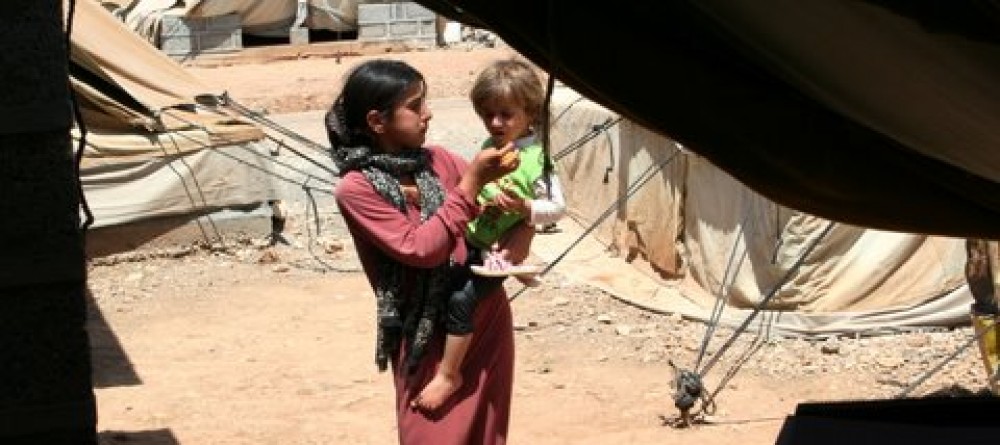While listening to National Public Radio today, I heard men and women, who had fought in U.S. forces in Fallujah in past battles, voice their dismay at what is happening there now. It makes sense that the current struggle with State of Iraq and the Levant (ISIS), affiliated with Qaeda, over the control of Fallujah would cause them to wonder if all their risk and sacrifice was in vain. I can understand the pain those former soldiers must be feeling—they were also victims of these battles. From my vantage point, however, of working with a peace team in Iraq at the time, I saw how the massive attacks and battles in Fallujah exasperated, rather than dealt with, the underlying problems behind the violent resistance. I also witnessed the tremendous pain and suffering it caused the Iraqi people, the primary victims of this violence.
Unfortunately, I am not surprised at what is currently happening in Fallujah and other Iraqi areas, considering the violent legacy of the 2003 invasion and subsequent occupation, as well as the legacy of Saddam’s regime. It is a logical consequence of many choices and actions of U.S. civilian and military personnel in Iraq as well as leaders in the new Iraqi government.
The invasion left Iraqis with a broken, ravished society. For a year after the invasion, the U.S. left Iraq’s borders open to foreign fighters to come in. Even after the borders were more protected, the ongoing presence of U.S. forces attracted foreign militants to come and fight the Americans in Iraq. Instead of bringing leaders of different fractions together to work toward cooperation and shared leadership and the rebuilding of the infrastructure of the country, the U.S. Military and civilian leadership put its resources and energy into protecting its own forces and controlling the country. The ways American personnel operated there—minimizing leaders of various factions, hand-picking the first leaders from the wealthy, corrupt pool of men who supported U.S. intervention, not supporting nonviolent civil action groups if they criticized U.S. occupation, and training and supplying Special Police Forces (who were Shia Muslim) who targeted Sunni Muslim, etc., etc.—perpetuated the existing divisions and power struggles in society.
In places such as Fallujah, where there was an active resistance to U.S. occupation, U.S. leaders were too intent on keeping control of the city, and so failed to creatively work with and support the local leaders and allow more local autonomy. This fear of losing control of the city culminated in the massive attacks of Fallujah in 2004. On the eve of the Nov. 2004 attacks of the city, local leaders had come together with plans to expel terrorist groups and keep order in the city and so prevent the attacks, but this was rejected and the attacks proceeded. U.S. officials responded with each threat they felt with excessive violence, and, in return, each attack increased the Iraqis’ anger toward the U.S. and their openness to Al Qaeda-type groups to help them oppose American forces. Paying tribal leaders in Fallujah in 2006 (“the Awakening”) to oppose Al Qaeda-type groups seemed to work for a time, but did not really address the underlying causes of the violent resistance, and so deteriorated when the payments stopped.
Policies and actions of Nouri al Maliki, the head of the Shia-led government, also contributed to this as it also focused on entrenching his power. Over the years he has offended, rather than built cooperative working relations with, local Sunni leaders in Fallujah and other cities.
The history of this tragedy is more evidence that war and military intervention and control doesn’t work and that our country has sown the seeds of ongoing violence in Iraq and elsewhere. Our trying to stamp out terrorism with excessive violence has only encouraged it to spread.
One thing that people critical of nonviolence like to do in such situations where using violence and military control have led to disaster, is to say, “O.K, now, how would you turn this around using nonviolent methods?” and expect some instant resolution. Nonviolence is definitely the way that leads to healing and building up, but such situations of brokenness, mistrust, and power struggles, are not easy to reverse.
It will take a long-term process based on choosing different assumptions and methods of operating that encourage the natural desire of the common people in Iraq for cooperation, tolerance, and just and fair distribution of resources and power. As a nation, we must learn from and not repeat these tragedies in any new military intervention, and our country must radically change how it relates to the other countries of the world and its use of the world’s resources. Not easy, but necessary if we want to stop the seeds of terrorism from growing and prevent the current human suffering that is occurring now in Fallujah, Syria, Afghanistan, and elsewhere in the world.
(For more information about past events in Fallujah, see Peggy’s book: Walking Through Fire: Iraqis’ Struggle for Justice and Reconciliation (Cascade, 2013))
